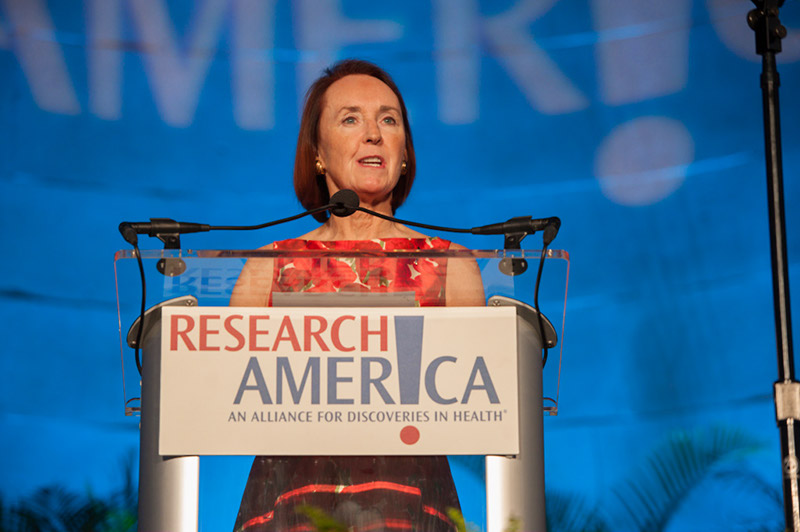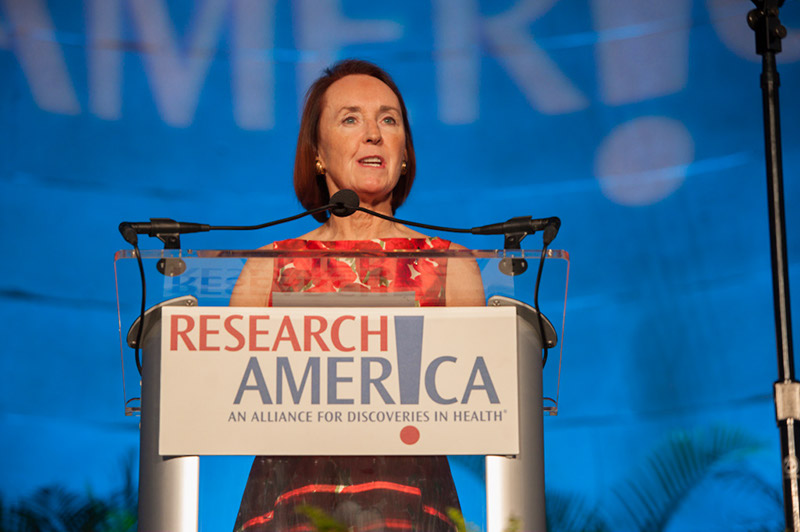Breaking through

 Dear Research Advocate:
Dear Research Advocate:
The House Appropriations Committee released its FY19 Labor-HHS funding bill earlier today for subcommittee markup tomorrow morning. A few notes on the bill: NIH received $38.3 billion — an additional $1.25 billion over the FY18 level — and AHRQ received $334 million — the same funding level as FY18. After accounting for anticipated, one-time changes to the total (including the transfer of the strategic national stockpile to the Office of the Assistant Secretary for Preparedness), CDC received a $427 million funding increase. Given that the highly constrained dollars the “Labor-H” Subcommittee had to work with, the NIH, AHRQ and CDC results are definitely a positive step forward.
Drug pricing was the primary topic as HHS Secretary Azar testified before the Senate HELP Committee this week. The Administration’s continued push for value-based pricing — echoed as a viable path forward by a growing consensus — stands in stark contrast to the House passage of H.R. 3, which follows the Administration in seeking to rescind $800 million from the Center for Medicare and Medicaid Innovation (CMMI) budget. As discussed in previous letters, CMMI tests new financing and delivery models to ensure they work as advertised. In a letter to Congressional Leadership, Research!America and the Network for Excellence in Health Innovation (NEHI) made the case for not rescinding funding from CMMI. Please join us in making that case by sending a tweet to your Senators.
During Tuesday’s Research!America webinar, “The Value of Evidence-Based Treatments for Migraine Sufferers,” panelists described how research has worked to address gaps in migraine prevention and treatment, and to improve access to care for patients. If you were unable to join us, you can watch a recording of the webinar here.
Yesterday we co-hosted a Hill briefing in partnership with the Patient-Centered Outcomes Research Institute (PCORI), National Hispanic Medical Association (NHMA) and the National Medical Association (NMA), to explore how advances in patient-centered research are working to improve mental health care, particularly for underserved populations. Breaking through the stigma around mental illness and engaging patients as research partners are both essential if we are to increase awareness of, and find meaningful ways to address, mental health conditions.
Further on unmet needs: the CDC recently released some startling statistics on the rise of suicide in the United States. According to the report, suicide rates have risen in all but one state between 1999 and 2016, and suicide is now the 10th leading cause of death nationally. Although prevention efforts have largely focused on mental health conditions, researchers found that more than half of those who died by suicide did not have a diagnosed mental health condition. This not only speaks to the need for better understanding and detection of mental health concerns, but also the need to take a comprehensive and multi-disciplinary approach to addressing this alarming public health threat. Please see our fact sheet for more.
Most breakthroughs in public health actually have a history featuring research, analysis and commitment. Even what we take for granted today — mosquitoes spread a host of diseases; smoking kills; and so on — was once not so obvious. It may seem daunting, expensive and even impossible, but through a sustained commitment to research and public engagement, challenges from Alzheimer’s to the substance abuse epidemic can be overcome. Our tax dollars are being put to work right now: NIH leadership has outlined the Helping to End Addiction Long-term (HEAL) initiative, seeking to better understand and treat pain through non-addictive means while also improving overdose reversal medication and existing addiction treatments. On the legislative side, the House has passed 25 bills to confront opioid addiction and overdose. Included in the package is a measure to allow NIH to develop non-addictive pain treatments and another to authorize the Substance Abuse and Mental Health Services Administration (SAMHSA) to develop best practices for operating housing facilities for those recovering from addiction.
A troubling report from the National Academies highlights a self-imposed barrier the scientific community simply must address. Far too many women — as many as half of those in the STEM fields — continue to face harassment, which not only negatively impacts the recruitment, retention and advancement of women, it seriously hinders the advancement of science at large. As we look to leaders to drive policy change, it is incumbent on us all to push for a cultural change that no longer tolerates harassment and discrimination against our female colleagues in STEM fields.
Sincerely,
Mary Woolley




